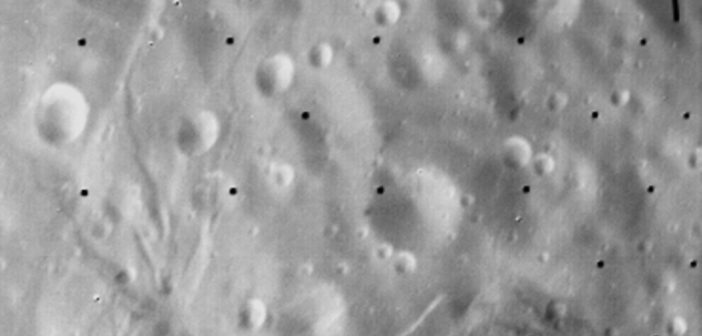
Top row: Images of Miranda’s surface taken by Voyager 2. Bottom row: Those same images with muted and non-muted craters indicated. Click for high-resolution version. [Beddingfield & Cartwright 2022]
Do you see any differences between the craters in this photograph of Uranus’s moon Miranda? The images above and to the right, captured by the Voyager 2 spacecraft as it passed by the Uranian system in 1986, show that many of Miranda’s craters are “muted,” meaning that their edges are softer or more subtle than fresh craters.
In a new research article, Chloe Beddingfield (SETI Institute and NASA Ames Research Center) and Richard Cartwright (SETI Institute) studied Miranda’s craters to investigate the cause of the moon’s muted terrain. Typically, craters evolve through erosion, relaxation, and the addition of material to the surface, and each process has a unique signature; erosion results in craters with steep, crumbling sides, relaxation causes sharp rims and raised floors, and the addition of material yields softened surface features like those seen on Miranda.
Beddingfield and
Cartwright estimated the thickness of the surface material, or regolith, and found that Miranda has among the thickest measured regolith of any body in the solar system. While Miranda’s regolith could have several origins, the authors suggest that particles raining down from Uranus’s rings are the most likely source. Hopefully, an upcoming Uranus orbiter will give fresh insight into Miranda’s geologic history and photograph never-before-seen sections of its surface.
Citation
“Miranda’s Thick Regolith Indicates a Major Mantling Event from an Unknown Source,” Chloe B. Beddingfield and Richard J. Cartwright 2022 Planet. Sci. J. 3 253. doi:10.3847/PSJ/ac9a4e


